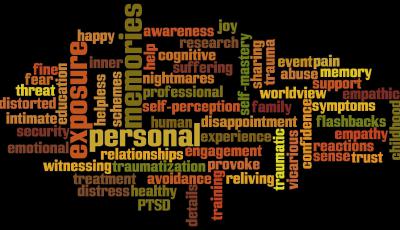Helping Ourselves to Deal with the Pain of Others: Secondary Traumatization Syndrome and Vicarious Traumatization
Posted:
Time to read:
Guest post by Shlomit Weiss-Dagan (MSW), a clinical social worker in a social welfare department, Jerusalem, and PhD candidate (social work) at Bar-Ilan University, Israel. Shlomit is currently in Oxford.This post is the third instalment of the Border Criminologies Themed Week on Research Methodologies, organised by Prof Mary Bosworth.
Trauma can be emotionally contagious. I have experienced it personally. While I was a social worker, I was exposed to many kinds of human trauma, including cases of child abuse. Gradually, the distress I was witnessing at work intruded on my inner, personal sense of security. I only noticed what was happening during a holiday with my family. My father took my nephews to his bed to read stories to them, just as he used to do in my own childhood. As a social worker exposed to many kinds of child abuse, I found myself, walking into my father’s room and checking that ‘everything was fine.’ Needless to say, I had a happy and healthy childhood. My dad looked at me and realized what I was doing. He had huge disappointment in his eyes. Later on, he told me that it was one of the most difficult moments of his life. That was the first time I realized what exposure to trauma can do.

Another form of secondary trauma is known as ‘Secondary Traumatization Syndrome.’ Equivalent to Post-Traumatic Stress Disorder (PTSD), this response can occur as a result of experiencing a traumatic event, threat of death or physical injury in which a person felt helpless and deeply in fear. The symptoms of PTSD are generally divided into three categories: intrusive memories (flashbacks, nightmares, recurrent distressing memories, etc.); avoidance (trying to avoid anything that can provoke the trauma memory, e.g., avoiding places or talking about the traumatic event); and changes in emotional reactions (trouble sleeping and concentrating, etc.). Secondary trauma and vicarious traumatization symptoms mimic those of PTSD making it harder to acknowledge it and treat it.
If you find yourself, upon exposure to the pain of others, trying to avoid remembering shady details of it, reliving the traumatic event, or experiencing severe emotional distress, then you are probably experiencing secondary traumatization. It is important to realize that this is a natural consequence. It is human. Secondary traumatization and subsequent emotional distress flow from to our empathic engagement with the pain of the other.
The obvious question is what we can do about it? How can we become more resilient while we are exposed to suffering and nauseating details of distressful material during our professional or research work. In my own work, as in other others, I found that special training, social and organizational support, and even psychotherapy were helpful. Education on the impact of secondary traumatic stress makes people more aware of the symptoms and emotional reactions. On an organizational level, additional supervision that can encourage emotional processing can be very helpful.
Although dealing with trauma survivors is difficult, the emotions we endure are also a reminder of the importance of that task. Dealing with pain is not only risky, but it can at the same time be beneficial and encourage our personal growth. It can strengthen our emotional resilience for the future while assisting us in responding to those we work with or seek to understand.
For further reading see Figley, C. R. (ed.). (1995) Compassion Fatigue: Coping with Secondary Traumatic Stress Disorder in those who Treat the Traumatized (No. 23). Psychology Press.
Themed Week on Research Methodologies:
- Monday: Thinking and Talking about Research Methodologies: Why Should we Bother? (M. Bosworth)
- Tuesday: Suspicious Minds and Unwelcome Researchers: Obstacles Encountered When Researching Forced Return in Sweden (D. DeBono, S. Rönnqvist, and K. Magnusson)
- Wednesday: Helping Ourselves to Deal with the Pain of Others: Secondary Traumatization Syndrome and Vicarious Traumatization (S. Weiss-Dagan)
- Thursday: Is it Ethical to Carry Keys for Research in Immigration Detention Centres? (S. Turnbull)
- Friday: Oh the Pains, Frustrations, and Dilemmas of Field Research! If Only We Could Share Them… (I. Hasselberg)
Any thoughts about this post? Get in touch with us! Send us an email, or post a comment here or on Facebook. You can also tweet us.
__________
How to cite this blog post (Harvard style):
Weiss-Dagan, S. (2015) Helping Ourselves to Deal with the Pain of Others: Secondary Traumatization Syndrome and Vicarious Traumatization. Available at: http://bordercriminologies.law.ox.ac.uk/traumatization-helping-ourselves/ (Accessed [date]).
Share:








